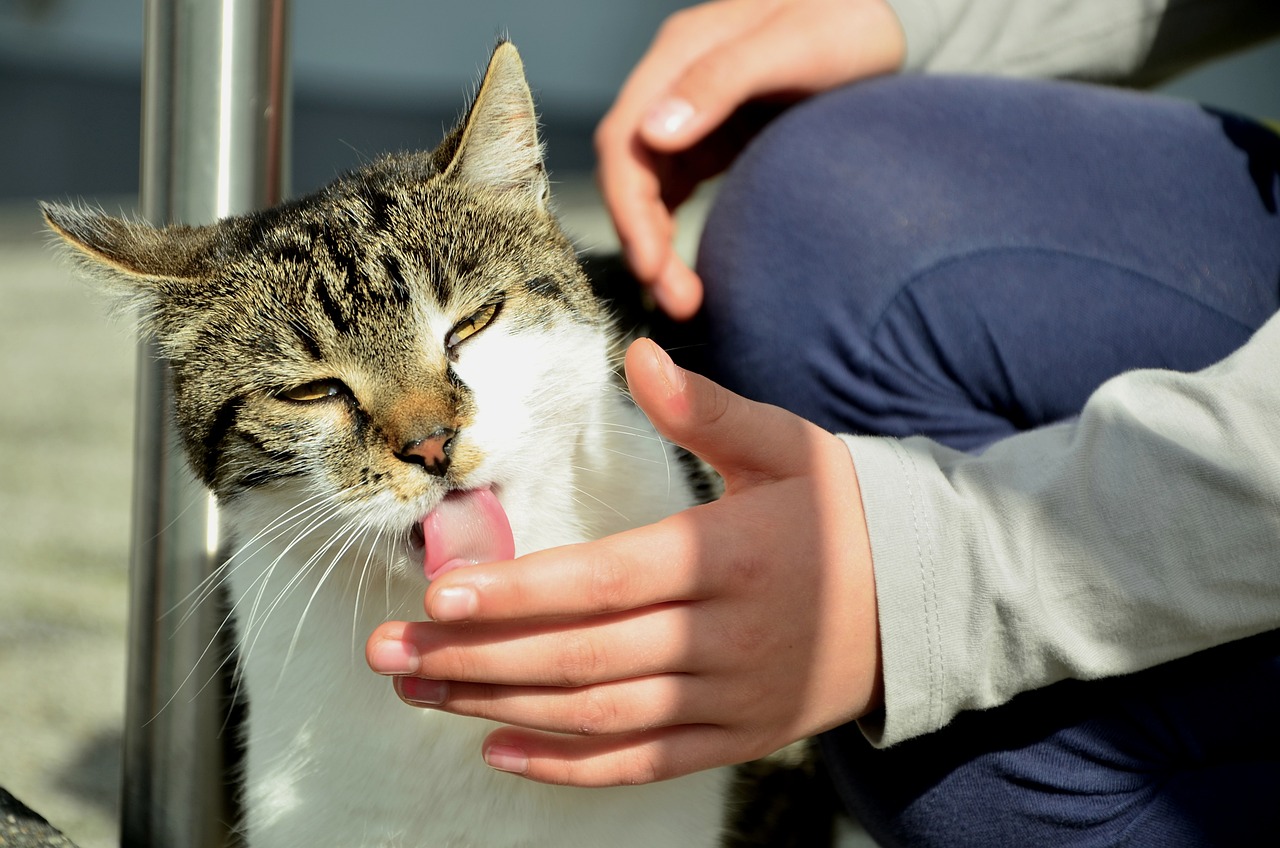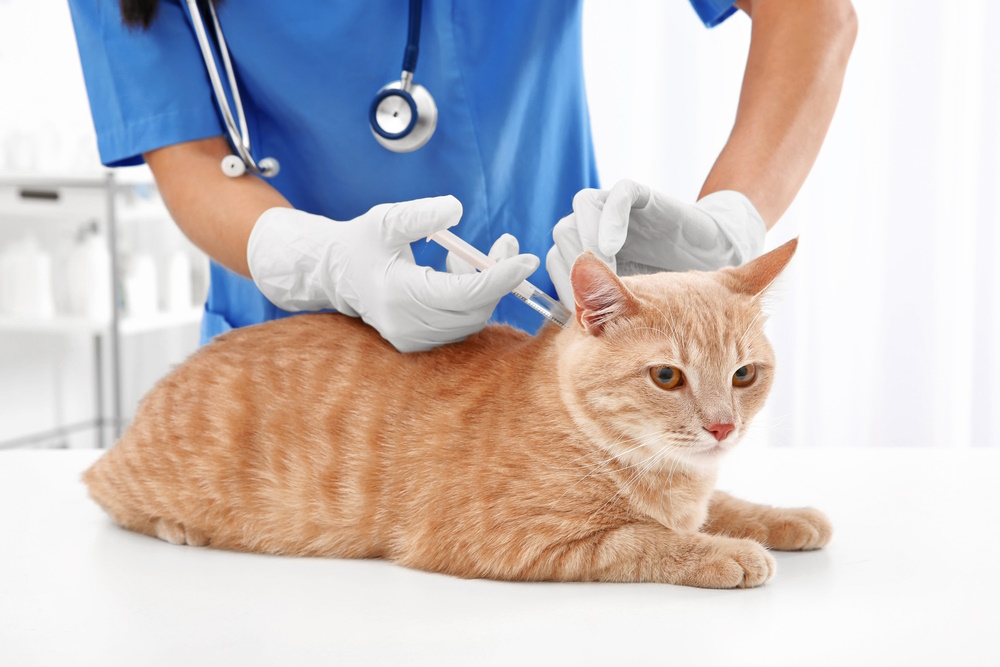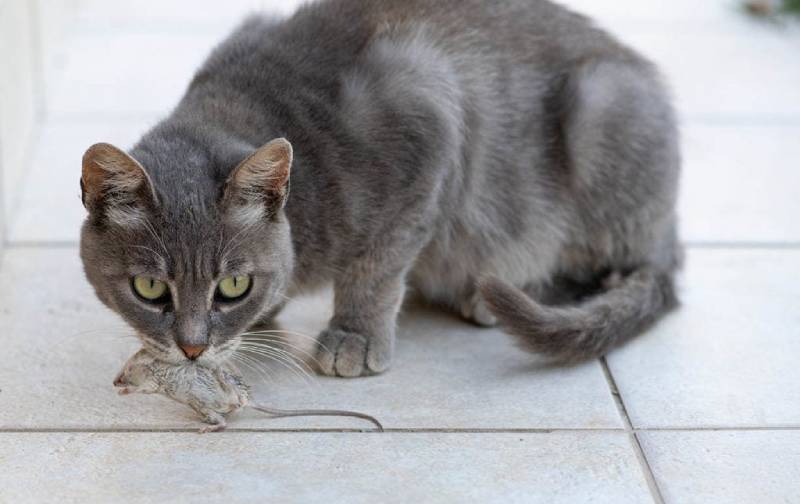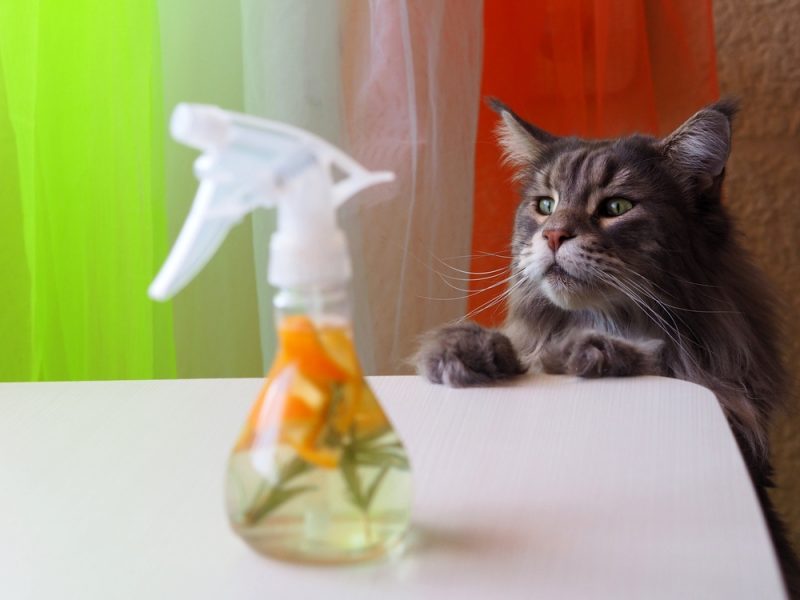In this article
Rabies is a disease that used to be relatively common among domestic animals, including dogs, ferrets, and cats. It’s possible for any mammal, including humans, to catch and transmit this devastating viral disease. Louis Pasteur developed the first human rabies vaccine in 1885, and a canine inoculation was introduced in the 1920s. The virus lives in its victim’s nerves, spinal cord, and brain. So can you get rabies from a cat scratch? Rabies spreads through contact with an infected animal’s saliva, but according to the CDC, it’s possible to catch rabies if scratched by an infected animal.1

What About If an Infected Cat Licks Me?
It’s highly unlikely that you’ll come down with rabies if licked by an infected cat or dog unless the animal licks an open wound or their saliva somehow manages to come into contact with your mouth or eyes. Transmission through aerosolized particles is extremely rare, and you’re not in danger of contracting the disease if you pet an animal with the virus. Nor does coming into contact with the blood or feces of a rabid animal put you at risk.

How Does Rabies Spread?
Rabies spreads through contact with the saliva of an infected animal, most commonly through a bite. After being bitten by a rabid animal, the virus travels through the newly infected mammal’s nerves until it enters their spinal cord and, ultimately, their brain. After reaching the brain, the virus appears in the animal’s salivary glands. At that point, they can easily infect other mammals that come into contact with their saliva.
It usually takes around 3 to 12 weeks for the virus to move from the bite site to the brain, and most animals don’t show signs of having been infected during this initial incubation period. If an animal that has been exposed to rabies but is still in the early stages of the disease bites you, you’re unlikely to develop the disease since the virus has not yet entered the infected animal’s salivary glands.
Once the virus reaches the brain, animals begin showing the classic symptoms of a rabies infection, including staggering, seizures, fearfulness, and excessive drooling. Once the virus reaches the brain, it often infiltrates the salivary glands before apparent symptoms develop. If bitten by an animal with the rabies virus in their salivary glands, you’re at risk of developing the disease. Animals usually die within 7 days of the virus reaching the brain.
Are Cats & Dogs Required by Law to Be Vaccinated Against Rabies?
Almost every state in the United States has a law requiring rabies vaccinations for cats and dogs. Most kittens automatically receive their first rabies shot as part of the core series of vaccinations that are given in a sequence when kitties are between 2 and 4 months old. Many countries, such as Australia and the Netherlands, where rabies has essentially been eradicated, don’t require regular rabies vaccinations, only suggesting them for cats traveling to areas where the disease is still active or requiring them for kitties arriving from other countries.


What Animals Typically Get Rabies?
All mammals can get rabies, although there are trends influenced by location. In the United States, foxes, bats, raccoons, and skunks are the animals that are most often diagnosed with the disease. Dogs are the biggest culprits in most other parts of the world, particularly in Africa and Asia.
Nepal, Guyana, India, Belize, Burma, Afghanistan, Bolivia, Indonesia, Armenia, Azerbaijan, Bangladesh, Belarus, Brazil, China, Colombia, Cuba, Vietnam, Ecuador, Georgia, Guatemala, Haiti, Laos, Malaysia, Mongolia, Moldova, Sri Lanka, Peru, Pakistan, the Philippines, Russia, Tajikistan, Turkey, and Venezuela are all considered high-risk countries when it comes to canine-based rabies transmission.
Rabies among dogs and cats has essentially been eradicated in the United States, Western Europe, Australia, New Zealand, and Japan. A small percentage of Australian bats carry the Australian bat lyssavirus (ABLV), which is in the same family as rabies. There are still cases of rabies among cats in the United States, approximately 250 per year, most of which occur in unvaccinated cats after coming into contact with an infected wild animal.
How Often Do People Get Rabies?
There are usually around 1 to 3 cases of confirmed rabies in the United States each year, and around 60,000 people require post-exposure prophylaxis (PEP) annually after coming into contact with an animal suspected to be rabid. The vast majority of rabies or suspected rabies cases in the United States stem from contact with wild animals.
Almost 7 out of 10 people in the United States who end up dying from rabies do so after having been bitten by a wild bat. Cats and dogs infected with rabies almost always have either never been vaccinated or have lapsed vaccinations. Dogs and cats most often are infected after being bitten by a wild animal carrying the virus.
Just over 35,171 people per year in Asia die after being bitten by an animal carrying the virus, with a whopping 59.9% of Asian rabies deaths occurring in India. While monkeys, cats, mongooses, and badgers commonly have rabies in India, dogs cause the vast majority of human rabies deaths. Rabies deaths in India account for 35% of all rabies deaths worldwide.
Approximately 21,476 rabies-related deaths occur annually in Africa, most of which are related to dog bites. Around 1,875 deaths per year occur in Central Asia due to the virus.
Asian nations spend $1.5 billion per year just on PEP. Unfortunately, vaccination of dogs and cats in the areas where rabies is most often fatal almost never occurs.

Can Rabies Be Treated?
Yes, but prevention is the best way to keep yourself safe from this traumatic disease. There’s a safe vaccine that’s ideal for people planning to travel to places with endemic levels of the disease or that work with animals. It requires 3 doses spaced a week and then a month or so apart, and it provides almost 100% protection for up to 5 years.
There’s also post-exposure prophylaxis or PEP: a series of anywhere from 3 to 5 injections given if you’ve been bitten by an animal suspected or confirmed to be rabid. Those who haven’t received any prior rabies inoculations usually also receive human rabies-specific immunoglobulin (HRIG).
If you get bitten or scratched by an animal you suspect might be carrying the rabies virus, wash the bite or scratch with soap and lots of running water for at least 5 minutes and reach out to a local health care provider for further guidance urgently.
You’ll need to take the situation seriously, but addressing the wound itself should take priority. Keep in mind that bat bites are often quite difficult to see and often don’t appear to be that serious as they’re usually small. Don’t base your determination of whether or not you need further medical care only on the seriousness of the wound.
Keep in mind that rabies is one of the deadliest diseases on earth; untreated, it has a 99.9% fatality rate in humans.
What Are the Symptoms of Rabies in Humans?
The first sign of rabies is often numbness around the place where you were bitten or scratched, along with a general feeling of malaise, weakness, and headaches. Some people report a feeling of serious agitation and difficulty sleeping. Others begin to froth at the mouth, become confused, and develop an inexplicable fear of water. Seizures and muscle spasms are also regularly seen after exposure. Once the more advanced symptoms kick in, such as confusion, fear of water, and anxiety, recovery is almost impossible.
What if a Rabid Animal Bites My Cat?
Contact a veterinarian immediately if your companion is bitten by an animal. The veterinarian can re-vaccinate your already vaccinated cat to provide an extra bit of protection that almost always ensures your pet will be completely safe!
If you need to speak with a vet but can't get to one, head over to PangoVet. It's an online service where you can talk to a vet online and get the advice you need for your pet — all at an affordable price!


Final Thoughts
Rabies is a potentially fatal disease that any mammal can catch. It’s transmitted by coming into contact with the saliva of an infected animal, usually through a bite, more unusually through a scratch.
The chances are quite low that you’ll end up infected by a scratch from your best friend’s house cat in the United States, Europe, Australia or Japan. Get vaccinated if you’re planning on going to a country where the disease is endemic, and make sure to have any bite or scratch inflicted by any mammal in a high-risk area checked out immediately.
Featured Image Credit: Anna Kraynova, Shutterstock


















